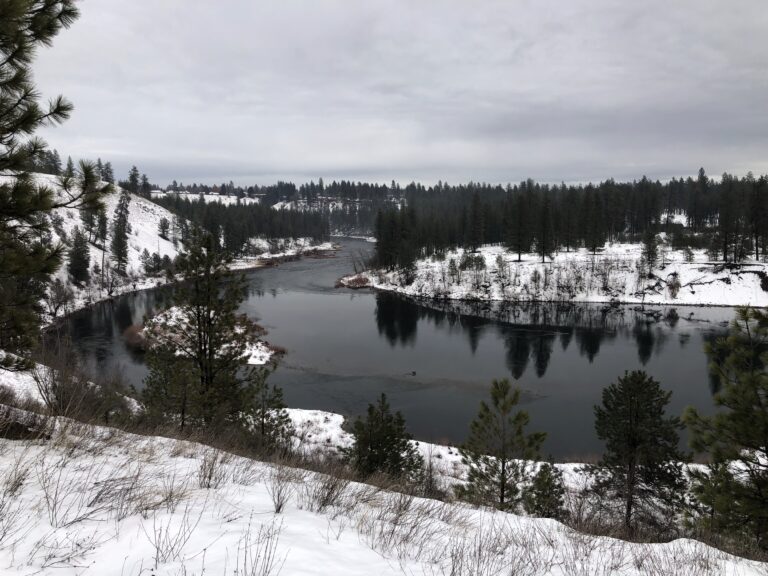Kayaking Made Easy, 3rd Ed.
Dennis Stuhaug
Falcon, 2006, 264 pages.
This is a carefully and lovingly written review of all aspects of sea kayaking from choosing a boat to navigating and even sailing a kayak.
Many of us have asked ourselves the question, usually when things are not going as planned: “Why can’t this be easier?” Kayaking Made Easy offers an answer to this timeless question.
After some words of encouragement, the manual begins with a “frame out” review of different kayaks and their construction followed by more chapters on outfitting and equipment. Kayaking technique-including strokes, braces and self-rescue techniques-make up the middle section of the book. The latter third of the manual introduces the kayaker to the open water with interesting chapters on navigation and piloting, trip planning and an optimistic chapter on traveling with children.
Underlying this manual is the author’s belief that the kayaker is a part of the watery world through which he or she travels. Although he does not parade his philosophy, the reader soon recognizes the importance of simplicity, flexibility, environmental awareness and sustainability in Mr. Stuhaug’s world. These principles may be under appreciated by the novice wrestling with the subtleties of bracing and navigating in a current, but become increasingly important as skills improve and one’s horizon extends.
Such a comprehensive review inevitably skims over certain topics. Most of the book’s diagrams and a full chapter are devoted to maneuvering the boat, while a paragraph describes the roll, which for most of us is a watershed (pun intended) skill. Kayaking is a dynamic, skill-based sport. The inclusion of a DVD or website link demonstrating technique would increase the effectiveness of the text.
A recent New York Times article reported that kayaking has tripled in popularity since 1998. 12.6 million people got into a kayak last year and 2 million kayak regularly. Mr. Stuhaug’s manual has something for all sea kayakers from taking one’s first stroke to setting a sea anchor to low impact camping.
William Sayres
High Tech Trash: Digital Devices, Hidden Toxics and Human Health
Elizabeth Grossman
Island Press, 2006, 276 pages.
The electronic age, with its cell phones, personal computers, and other technological marvels, spawned the energy saving ideas of the paperless office, rapid information exchange and telecommuting. Now, as much of the developed world has become dependent on digital devices, Elizabeth Grossman reminds us of the downside of this technology. “Every point — from the collection of raw materials that go into high tech products to the manufacturing process to when we discard these products – each phase has an impact on our health and our environment.”
Grossman sees affluent Americans, Europeans and Japanese with their penchant for always having the latest, most powerful model of nearly everything as a major contributor to the problem.
Chemicals in that cell phone next to your ear or those in your computer monitor won’t jump out and attack you. It is when components are broken up and dumped in landfills that the risks mount up. Grossman leads us through the technical maze of chemical and photo-degradation processes leading to the release of lead from the glass of broken cathode ray tubes (monitors) or solder in circuit board connection, to the degradation of plastics to release flame retardant chemicals, to the release of cadmium, barium and other metals through degradation of batteries and microprocessor chips themselves.
Grossman also addresses the environmental justice issue of exporting high tech trash to third world countries where unskilled workers dismantle old equipment in less than ideal factory conditions.
Finally, Grossman guides us through some solutions. As individuals we need to use products longer: rebel against planned obsolescence, resist the temptation to upgrade to that new software version that requires faster hardware to function. We must find recycling and reuse options for our unwanted equipment. As a society we must demand that resource extraction and manufacturing minimize waste production and create products posing minimal disposal risk. We need to make it more difficult for industry to send our disposal problems to third world countries.
Stan Miller
Hiking the West Coast Trail, A Pocket Guide
Tim Leadem
Greystone Books, 2006, 86 pages.
Poring through Tim Leadem’s truly pocket-sized and handy paperback detailing Vancouver Island’s awe-inspiring West Coast Trail, I wondered whether I would rather die from a black bear mauling or by a rogue wave hauling me out to sea.
Hiking the West Coast Trail, is efficiently packed with helpful tips on dealing with such hazards, including how to react to wolves and negotiate mud bogs. Encounters with wildlife aside, Leadem points out that “the greatest danger to poorly equipped or inexperienced hikers is hypothermia,” even in midsummer.
Leadem’s succinct book is cleverly designed-once you’ve read the south to north route, you flip it over for north to south. Each side includes detailed maps for each direction, with symbols locating toilets, campsites, shipwrecks and other crucial services. The south to north version includes a thorough introduction that covers everything from trail history (“hacked out of the wilderness in 1889 for a telegraph line”) to required permits.
The book’s usability factor is increased by the way Leadem begins each trail section chapter, listing distance, average time to hike the leg, rating (easy, moderate or difficult), features (i.e. plant life, waterfalls), hazards (i.e. ladders, stream crossings) and tide problems.
Apparently the trail is one of legend, “the definitive hike of the temperate rain forests of the west coast of North America.” If, like me, you had never heard of this B.C. trekking gem, prepare to feel ashamed. The trail’s “mysteriously primeval trees…sheer sandstone cliffs, and crashing seas beating against rocky headlands” are the stuff of legends in the “beer halls of Munich” and “the sushi bars of Tokyo,” according to Leadem.
If you are up for a rewarding challenge, pick up a copy of this affordable guide, get out your gaiters and fast-drying underwear, toss some freeze-dried grub in the backpack, and prepare to experience extreme beauty and potential peril.
And if you run into a black bear momma with cubs, “play dead.” Oh, and never turn your back on the ocean.
Angie dierdorff Petro













